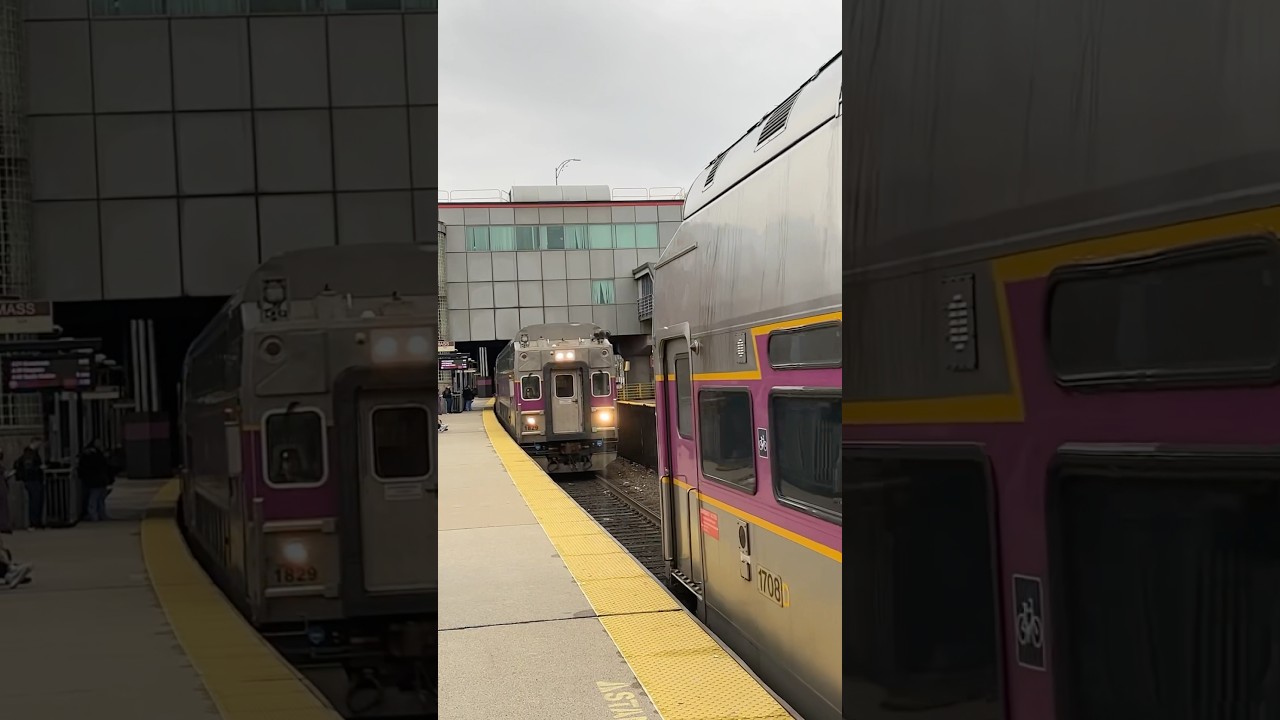A little bit of tailgating action going on here…
I would like to think that the second engineer knows what he is doing … but I am not so sure.
He’s going the distance.
He’s going for speed.
She’s all alone, all alone
In her time of need.
Because he’s racing and pacing and plotting the course,
He’s fighting and biting and riding on his horse,
He’s going the distance.
He got pretty darn close and you are right you can never be sure.
I observed a few instances where I was uncomfortable looking over the shoulder of the TRE contract engineers. Maybe I was worrying too much or maybe it was legit…can never be sure because I have no clue what the rules are and where experience weighs in on operations. Cab cars are fun to ride in as a passenger but not so much the first or second row seats behind the cab.
The L used to run tight in the Loop and at least on one occasion had a fatal collision at the Wabash and Lake curve in 1977. I saw it.
Even with CBTC that’s far short of the distance he’d need to stop under restricted speed – not counting reaction time.
The assumption is that the equipment move won’t slow down. I would not make that assumption.
Preview of NORAC 2.0 where PTC defines the rules …
PTC Is superior, and this is a good example of where it is in charge
I’m not an engineer. I think he should have been traveling at restricted speed, ie. one half the range of vision. Did he look like he could have stopped in half the length between them? Including reaction time.
Edit. I see Woke affirmed it.
They still run tight today. I use it. But never like this video.
That 1977 accident in part was the result of motorman marijuana intoxication.
But following too closely. In 1977 the US climate was different in its views concerning MJ.
Well yeah. He was tailgating because he was intoxicated. That line had ATC cab signals. So impossible to overspeed but like all ATCs at the time the lowest speed enforcement was 15mph. When he rear ended the next train he put on full power. It would have been a minor fender bender but the train complied with his command on a tight curve and all cars powered forward and essentially jack knifed. Since the track was 20 feet off the street down it went.
It was bad. At the time I was a young buyer at Fields and generally caught the Ravenswood L at Washingon. Two people I knew at Fields were killed.. My train was the one in front of the one that derailed. When I got home ( Montose stop up to Leland just north of Wilson) my wife said “Better call your parents to let them know you are ok.” “What for? Why wouldn’t I be ok”
I didn’t know about the crash yet.
Ravenswood trains at rush hour often ran a very short interval behind a preceding train. It still had A and B trains and stops back then.
Sorry to hear about your coworkers.
Can’t count on first train slowing down thru braking. Have to assume it hits brick wall. Have to be able to stop in 1/2 distance to where rear of first train is every second.
- Inconclusive evidence: Both the Chicago Transit Authority (CTA) and the National Transportation Safety Board (NTSB) noted that the urine test could not determine when the marijuana was consumed. Therefore, it could not be proven that he was under the influence at the time of the crash.
The National Transportation Safety Board ultimately attributed the crash to multiple errors by Martin, including:
- Poor safety record: Martin had a history of safety violations, including reading while operating the train and a previous derailment.
- Ignoring signals: He failed to obey the restrictive cab signal that indicated a train ahead.
- Panic response: After a minor initial collision, he panicked and applied full power instead of braking. This caused the train cars to jackknife, sending three of them off the elevated tracks.
The spacing between the OG video trains appears closer than the Class 1 carriers instruct crews to give occupied tracks in the yard when walking around them.
I believe today any marijuana in urine is a decertification. Can anyone confirm?
The CTA decertifies employees in safety-sensitive positions, such as bus and train operators, for a positive THC test, regardless of Illinois’ recreational marijuana laws. This is because the CTA falls under federal regulations for the transportation industry, which continue to ban marijuana use.
That policy won’t change under current federal administration, if ever.

